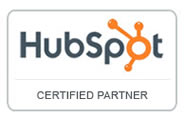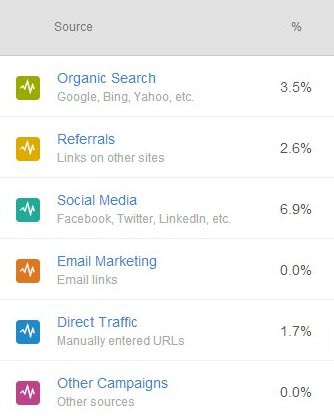Marketing KPIs & Benchmarks for 2026
We work with B2B leaders every day who have extensive marketing data, but don't know what to make of it. It's hard to know you're on track to meet...
5 min read
John Veckerelli Fri, Sep 20, 2013

Since becoming a HubSpot certified partner 18 months ago, a lot has changed. We’ve migrated our site to the HubSpot Content Management System (CMS), started a blog, and gotten a lot more serious about social media. We’ve created several content offers and downloads, implemented Calls to Action (CTA) throughout our site, built landing pages for each offer or CTA, integrated our email marketing with HubSpot, and set up lead nurturing emails (HubSpot calls them workflows because you can automate other things beyond triggering an email). We’ve also gotten used to looking at analytics more frequently and using the results to guide content development, SEO, and in many ways overall company strategy.
migrated our site to the HubSpot Content Management System (CMS), started a blog, and gotten a lot more serious about social media. We’ve created several content offers and downloads, implemented Calls to Action (CTA) throughout our site, built landing pages for each offer or CTA, integrated our email marketing with HubSpot, and set up lead nurturing emails (HubSpot calls them workflows because you can automate other things beyond triggering an email). We’ve also gotten used to looking at analytics more frequently and using the results to guide content development, SEO, and in many ways overall company strategy.
“Inbound marketing is a holistic, data-driven strategy to attract and convert visitors into customers through personalized, relevant information and content and to follow them through the sales experience with ongoing engagement.” [HubSpot]
Because that’s easier said than done, we thought we’d take some time to reflect on the lessons we’ve learned thus far and offer some tips for anyone looking to improve their overall marketing impact by growing their inbound marketing efforts. (Please enjoy the sports analogies.)
Transitioning to or building upon your inbound marketing strategy is a process, and the results aren’t immediate. Our website visits increased in steps:
But once we became more familiar with the platform and started using it more strategically, our traffic sources began to change and our keywords ranked higher. Our organic search traffic increased right out of the gate but leveled off for 9 months at about 90% more organic visits than where we started. As our blog posts and other content continued to bring in visitors, organic visits took a noted step up, increasing by more than 215%. The last 5 months have averaged over 400% more organic visits. After the initial bump, we ditched our Google ads (they were driving a lot of junk traffic) and focused on optimizing our site.
While greater website traffic is useful, obtaining leads and then converting those leads to customers is what counts most. Our leads from the web were minimal but grew immediately after joining HubSpot; they are now 2400% greater than at the start.
Our improved rankings meant we were discoverable by a much wider audience; for example, we landed a client from Australia who found us through organic search.


|
Long Shelf Life Content on your site is continually working behind the scenes. As more buyers focus on researching solutions, they reference your valuable content — sometimes several months after it was originally posted. |
Especially for companies that have done little or no inbound marketing, there will likely be a learning curve. It takes time to shift out of the outbound mindset, and certain hurdles need to be overcome. Initial steps will include:
HubSpot is an Olympic-sized pool of digital marketing tools. We spent the first few months just getting our feet wet, dipping a toe in the shallow end and watching for ripples. We started with optimizing our web pages using HubSpot’s built in on-page SEO “helpers”, then moved on to creating CTAs and content downloads; after than we started blogging and then blogging more frequently. We began to see that the more we did, the more attention we attracted. HubSpot also helped us identify variables that weren’t easy to get to before, such as: Who visits our website? Where do they come from? Where do they go once they’re there? How long do they stay? Which channel produces the most leads?

The ability to track the parts of our site people were visiting provided insight as to their needs and interests. With this information, we were able to develop better strategies to connect with and provide value to our customers. We began creating content that reflected those points of interest, such as blog posts, eBooks and tip sheet downloads; with HubSpot measuring conversion rates, we could a) see which downloads made the greatest impact with customers, and b) make informed decisions about content going forward.
If you’re still tentative about making the plunge, here are some good places to start:
Inbound marketing works best when it involves multiple channels. If you’re going to a tradeshow or have just written a stellar new whitepaper, promote it on social media (more than once!), send out an email invitation to visit your booth or download the paper, create a landing page for it, and write about for your blog. Make sure any web pages or posts include good SEO, for anyone who might simply search for the subject.
Here are some additional tips for capitalizing on the diverse offerings of HubSpot:
While there are some corners of HubSpot to which we have yet to venture, we’ve found through our experience that it’s better to be a player than a benchwarmer. Remember, you can’t go for the gold if you’re not even in the game.

We work with B2B leaders every day who have extensive marketing data, but don't know what to make of it. It's hard to know you're on track to meet...

Get a Competitive Edge with Comprehensive AI & GEO Insights If you are beginning to notice an erosion in organic traffic and leads, it may be time to...

Updated on 6/10/24 The 80/20 rule or Pareto principle, is a long-standing business strategy that a lot of companies are applying right now to...